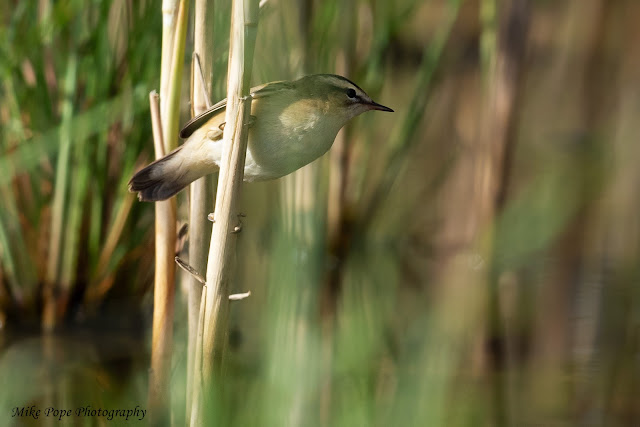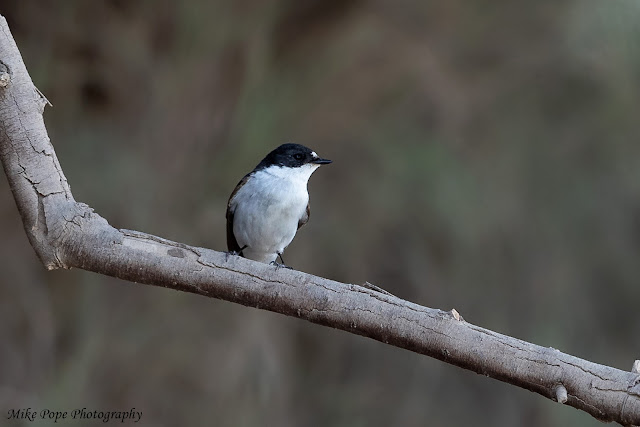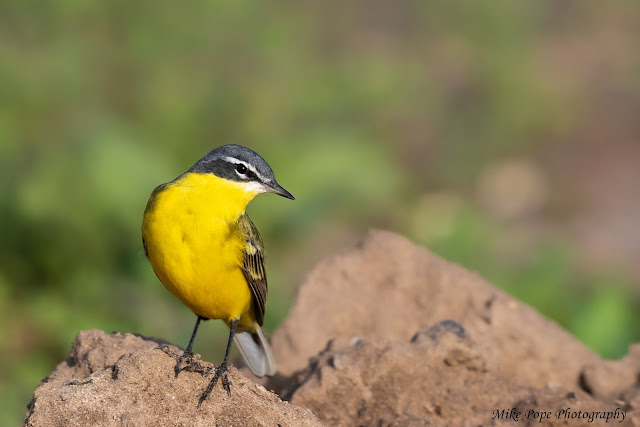Another early morning and very short visit to Pivot Fields after arriving at the gate by 6am.
I had a bonus at the patch of reeds just after entering the gate; a stunning male Caucasian Bluethroat and it has been quite some time since I have seen this form.
 |
| Caucasian Bluethroat (Luscinia s. magna) |
Whilst enjoying the Bluethroat a Common Sandpiper dropped in.
 |
| Common Sandpiper (Actitis hypoleucos) |
I noticed some movement deeper in the reeds and lo and behold, out popped a Spotted Crake that foraged in the same area where the Sandpiper was earlier
 |
| Spotted Crake (Porzana porzana) |
House Sparrow's were dropping down to drink
 |
| House Sparrow (Passer domesticus) |
and there were also a few with the Spanish Sparrows, these males having much whiter cheeks than some of the others seen earlier - Indian House Sparrow
 |
| Indian House Sparrow (Passer d. indicus) |
A great start so far. Driving into the farm, a fair sized flock of Spanish Sparrows were gorging themselves in the wheat field
 |
| Spanish Sparrow (Passer hispaniolensis) |
I headed to the marsh finding some calling Crested Larks on the way
 |
| Crested Lark (Galerida cristata) |
At the marsh, I had a quick walk and found another good bird in the form of Caucasian (Mountain) Chiffchaff that was quite relaxed around me, although it was never static
 |
| Caucasian Chiffchaff ((Phylloscopus lorenzii) |
There were also good numbers of Willow Warblers and a few Common Chiffchaff feeding in the reeds
 |
| Common Chiffchaff (Phylloscopus collybita) |
Sedge Warblers were typically skulky, but all quite vocal
 |
| Sedge Warbler (Acrocephalus schoenobaenus) |
Overhead, a Common Swift passed by
 |
| Common Swift (Apus apus) |
Whilst Collared Pratincole's were feeding on emerging insects overhead
 |
| Collared Pratincole (Glareola pratincola) catching insects |
Still big numbers of Common Snipe around the marsh (I keep looking for the elusive Pin-tailed). Although it is still satisfying catching one of this fast flying birds in flight especially hand-held and with a heavy prime lens.
 |
| Common Snipe (Gallinago gallinago) |
Green Sandpipers were easily identified by call, as they flew by
 |
| Green Sandpiper (Tringa ochropus) |
This is the spot for the White-tailed Lapwings that for sure should breed here in the coming weeks
 |
| White-tailed Lapwing (Vanellus leucurus) |
Not sure if this was a new Purple Heron, or one from a few days back
 |
| Purple Heron (Ardea purpurea) |
A Greater Spotted Eagle flew past as it headed for another Pivot to roost on
 |
| Greater Spotted Eagle (Aquila clanga) |
Then a quick drive around the farm, finding a Turkestan Shrike dispatching a Desert Locust. There are not enough Shrikes for the amount of locusts on the farm. It was against the light, so pretty happy with how these images turned out.
 |
| Turkestan Shrike (Lanius phoenicuroides) with Desert Locust (Schistocerca gregaria) |
A small flock of Lesser Kestrel were doing their part in dispatching with of some locusts too
 |
| Lesser Kestrel (Falco naumanni) |
 |
| In flight snack |
On the boundary with the Tamarix trees, a stunning male Ehrenberg's Redstart really stood out from the dead branches on the ground
 |
| Ehrenberg's Redstart (Phoenicurus p. sammamisicus) |
and a little further along, a Semi-collared Flycatcher just kept far enough away
 |
| Semi-collared Flycatcher (Ficedula semitorquata) |
A juvenile Pallid Harrier gives me the hairy eyeball after I inadvertently flushed it from the side of the road
 |
| Pallid Harrier (Circus macrourus) |
In one field, I found the pair of Red-wattled Lapwings which appear to be holding territory, as they are pretty aggressive to any raptor passing by overhead
 |
| Red-wattled Lapwing (Vanellus indicus) |
I found a field that along with Water Pipits, had
 |
| Caucasian Water Pipit (Anthus s. coutelli) |
Red-throated Pipits; many of them sky watching to keep an eye out for danger overhead
 |
| Red-throated Pipit (Anthus cervinus) |
a few lone White Wagtails are still hanging around
 |
| White Wagtail (Motacilla alba) |
There were also big numbers of Western Yellow Wagtails with many races/form present
 |
| Sykes's Wagtail (Motacilla f. beema) |
 |
| Western Yellow Wagtail (Motacilla f. dombrowskii) with the dark ear coverts |
 |
| Eastern Black-headed Wagtail (Motacilla f. melanogrisea) |
 |
| Western Yellow Wagtail (Motacilla f. superciliaris) |
 |
| Grey-headed Wagtail (Motacilla f. thunbergi) |
On the way out, a dark-headed sub-adult Steppe Eagle past by overhead - first time I have seen one of these forms
 |
| Steppe Eagle (Aquila nipalensis) |
These short and focused 2-hour sessions are really rewarding and today I had some pretty good birds, so no apologies for the photo heavy post.

























VERY GOOD PICS. JUST QUESTION, HOW CAN WE REACH THOSE PLACES? I MEAN ANY GATE-PASS NEEDED? THANKS FOR SUGGESTION
ReplyDelete